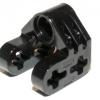Sign in to follow this
Followers
0

Maximum safe torque for single bevel gears in 3L differentials
By
Hrafn, in LEGO Technic, Mindstorms, Model Team and Scale Modeling
-
Recently Browsing 0 members
No registered users viewing this page.
